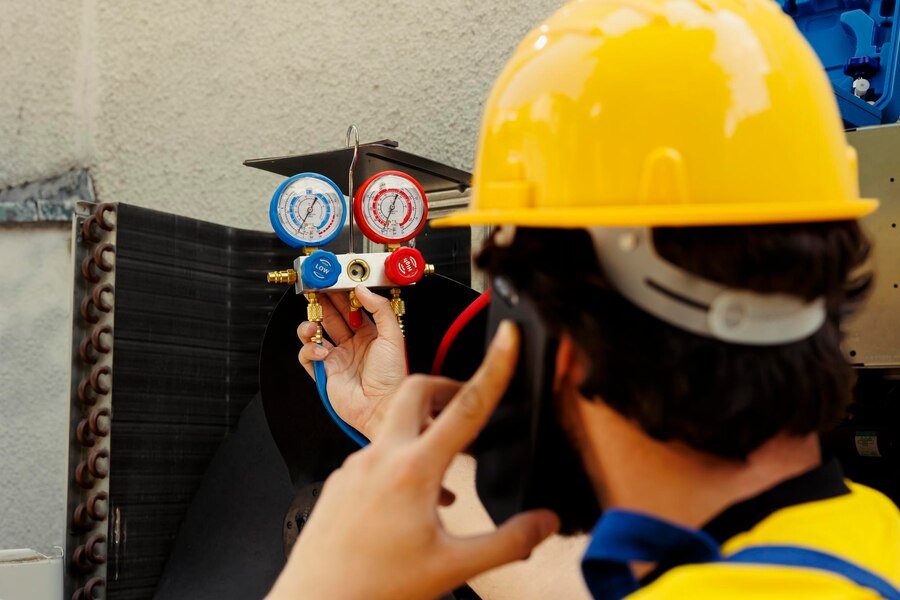Fire alarm wiring is a critical component of any building’s safety infrastructure. It forms the backbone of fire detection and alert systems, playing a crucial role in protecting lives and property. From residential homes to large commercial complexes, proper fire alarm wiring ensures that occupants are promptly notified in case of a fire emergency, allowing for swift evacuation and timely response from fire services.
This article provides a comprehensive overview of fire alarm wiring, covering various aspects of this essential safety feature. It explores different types of fire alarm systems, including conventional and addressable systems, and delves into the key components such as smoke detectors, heat detectors, and manual call points. The piece also examines wiring methods, best practices for installation, and important considerations like voltage drop calculations. Additionally, it discusses testing procedures and troubleshooting techniques to maintain the reliability of fire alarm circuits, ensuring they function effectively when needed most.
Types of Fire Alarm Systems
Fire alarm systems play a crucial role in safeguarding buildings and their occupants. There are three main types of fire alarm systems, each with its own unique features and applications.
Conventional Systems
Conventional fire alarm systems are the oldest type and are commonly found in commercial buildings. They use dedicated circuits for each field device, resulting in extensive wiring. These systems divide the space into detection zones, with multiple devices sharing a zone. When a fire is detected, the control panel indicates the affected zone, but not the specific device or location. This makes them more suitable for smaller properties. While conventional systems are affordable to purchase, their installation costs can be higher due to the complex wiring requirements.
Addressable Systems
Addressable fire alarm systems are more advanced and widely used in commercial buildings. They use a single circuit for all field devices, simplifying the wiring process. Each device has a unique address, allowing for precise location identification when a fire is detected. For example, the system might alert: “Alarm Smoke Detector Address 471, 3rd floor, left-wing, room 307.” This specificity reduces response time and enhances safety. Addressable systems are more expensive to purchase but less costly to install due to reduced wiring needs.
Wireless Systems
Wireless fire alarm systems are the most modern option, suitable for both commercial and residential buildings. These systems communicate with the control panel via radio frequency, eliminating the need for wires. While early versions faced reliability issues, modern technology has made wireless systems as dependable as wired ones. They function similarly to addressable systems in terms of detection and location identification. Wireless systems are the least expensive to install but have the highest hardware costs. Their main limitation is their dependence on batteries for power.
Components of Fire Alarm Wiring
Control Panels
Fire alarm control panels act as the brain of the system, coordinating various components. They monitor initiating devices, activate notification appliances, and communicate with first responders. Conventional panels divide buildings into detection zones, while addressable panels assign unique addresses to each device for precise location identification. Modern panels feature pre-alarm indicators, silencers, and system reset capabilities to enhance functionality and reduce false alarms.
Initiating Devices
Initiating devices detect fire or smoke and send signals to the control panel. These include:
- Smoke Detectors: Ionization detectors use radioactive material to detect smoke particles, while photoelectric detectors use light scattering or obscuring principles.
- Heat Detectors: Fixed temperature detectors activate at specific temperatures, while rate-of-rise detectors respond to rapid temperature increases.
- Manual Call Points: Also known as pull stations, these allow occupants to manually trigger alarms.
- Sprinkler System Devices: Flow switches and pressure switches monitor water flow in sprinkler systems.
Notification Appliances
These devices alert building occupants of fire emergencies. They include:
- Audible Alarms: Horns, bells, and speakers produce sound to warn occupants.
- Visual Alarms: Strobe lights provide visual warnings, especially for the hearing impaired.
Power Supplies
Reliable power is crucial for fire alarm systems. Options include:
- Primary Power: Supplied by electric utility, on-site generators, or cogeneration systems.
- Secondary Power: Usually batteries, sized to provide 24 hours of standby power and 5-15 minutes of alarm power.
- Emergency Generators: Can serve as a secondary power source, reducing required battery capacity.
- Stored-Energy Emergency Power Supply Systems (SEPSS): Provide uninterrupted power without separate primary and secondary sources.
Wiring Methods and Best Practices
Cable Types
Fire alarm systems use specific cable types, each designed for different applications. FPLR (Fire Power Limited Riser) cables are suitable for vertical runs through shafts or between floors. FPLP (Fire Power Limited Plenum) cables are used in overhead plenum spaces, offering better flame resistance. Both types come in shielded and unshielded versions. Shielded cables include an aluminum polyester foil shield to protect against electromagnetic interference (EMI).
Installation Techniques
Proper installation is crucial for fire alarm system reliability. Cables and conductors should be installed in a neat, workmanlike manner. When exposed on ceilings or walls, they must be adequately supported by the building structure to prevent damage. In areas prone to physical damage, conductors and cables should be protected. For underground installations, cables or conduits must meet minimum cover requirements as per Table 300.5 of the National Electrical Code (NEC).
Grounding and Shielding
Shielding is essential for canceling RF interference, particularly in speaker circuits and firefighter phone circuits. The shield should be grounded only at one end of the circuit, typically at the panel. Many installers incorrectly ground the drain wire at all junction boxes and device terminations. Instead, the shield and drain wire should remain intact from the start to the end of the run, protected from touching ground.
Voltage Drop Considerations
Voltage drop calculations are critical for ensuring proper system function. The End of Line (EOL) method is simpler but less accurate, while the Point to Point (PTP) method offers greater precision. UL 864, 9th Edition Standards require a demonstrated 20.4 VDC panel cut-off voltage for 24V systems. When performing calculations, it’s crucial to use the specific panel/power supply terminal cut-off value for accuracy.
Testing and Troubleshooting Fire Alarm Wiring
Continuity Testing
Continuity testing is crucial for ensuring proper fire alarm system functionality. This process checks if wires conduct electricity effectively. In conventional fire alarm circuits, the panel automatically supervises the wires. For Class B circuits with end-of-line resistors, the panel shows a trouble signal if a wire breaks or comes loose. Class A circuits operate similarly but can create two unsupervised circuits if an open wire is detected.
Insulation Resistance Testing
Insulation resistance testing assesses the electrical insulation within an installation. It ensures new installations meet safety standards and verifies older systems remain suitable for use. According to BS 5839-1:2017, cables with voltage ratings suitable for mains use should undergo 500V DC insulation testing. However, for 24V DC systems isolated from mains power, the risk of insulation-related faults is minimal.
Ground Fault Detection
Ground faults can occur on any fire alarm system output, including non-resettable power, SLC loops, zones, and NACs. They often happen in junction boxes or conduits but can also occur internally in the panel. To troubleshoot, one should:
- Acknowledge the panel’s ground fault indication
- Disconnect terminal blocks to isolate the fault
- Use a multimeter to determine if it’s a positive or negative ground fault
- Test field devices systematically to locate the fault
Common Wiring Issues
Common wiring problems include damaged insulation, moisture in underground conduits, and improper connections. Regular maintenance and testing can prevent these issues. When troubleshooting, it’s essential to reinstall devices after checking and move systematically through the system. For intermittent faults, monitoring the system over time and using event buffers in addressable systems can help identify the problem source.
Conclusion
Fire alarm wiring plays a crucial role in keeping buildings and people safe. This article has shed light on the different types of systems, key components, and best practices for installation and maintenance. From conventional setups to cutting-edge wireless solutions, each system has its own strengths and applications, giving building managers a range of options to choose from.
Proper testing and troubleshooting are essential to ensure these life-saving systems work when they’re needed most. By understanding the ins and outs of fire alarm wiring, from cable types to voltage drop calculations, professionals can set up reliable systems that offer peace of mind. In the end, well-designed and maintained fire alarm wiring is a cornerstone of building safety, helping to protect lives and property when every second counts.





